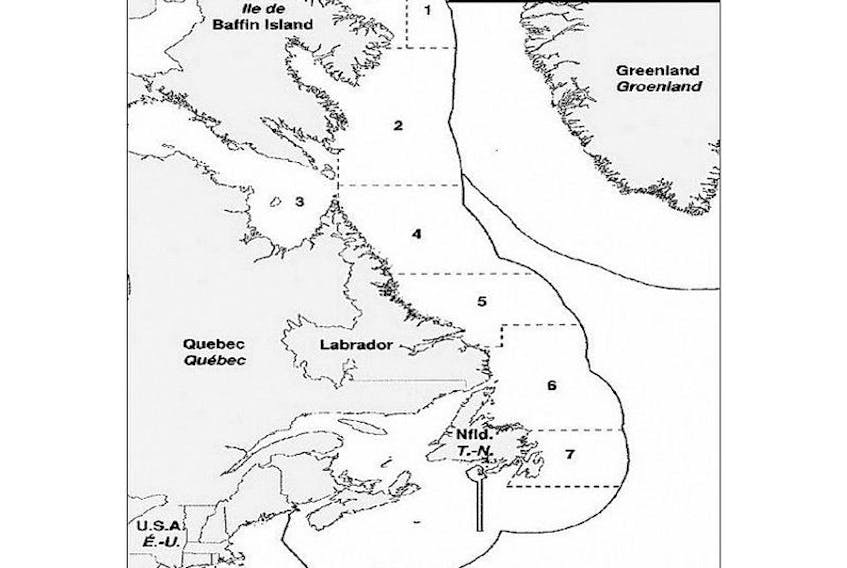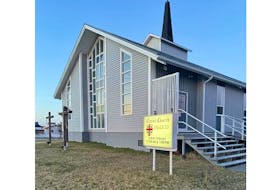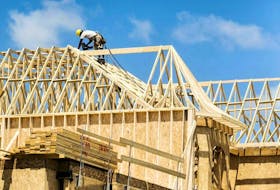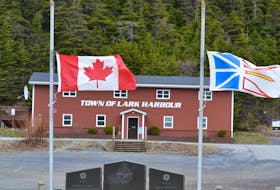In a media briefing this morning, Katherine Kanes, mathematician/stock-assessment biologist with Department of Fisheries and Oceans (DFO) outlined the current picture from the most recent stock assessments, for northern shrimp in fishing areas 6, 5 and 4 — off the Northern Peninsula and the coast of Labrador.
Data collected from the fall multi-species trawl survey by DFO, as well as information from fishers shows there’s not been much improvement from last year.
In SFA 6 — the area that most inshore commercial fishers from this province depend on for their shrimp catches — the biomass of female shrimp is still in the critical zone, she said.
In a media briefing this morning, Katherine Kanes, mathematician/stock-assessment biologist with Department of Fisheries and Oceans (DFO) outlined the current picture from the most recent stock assessments, for northern shrimp in fishing areas 6, 5 and 4 — off the Northern Peninsula and the coast of Labrador.
Data collected from the fall multi-species trawl survey by DFO, as well as information from fishers shows there’s not been much improvement from last year.
In SFA 6 — the area that most inshore commercial fishers from this province depend on for their shrimp catches — the biomass of female shrimp is still in the critical zone, she said.
The fishable biomass — the weight of all commercial-sized male and female shrimp — declined from 785,000 tonnes in 2006 to just 104,000 tonnes in 2016.
And there was a 25 per cent decline from 2015 to 2016.
If you count only the females — the Female Spawning Stock biomass (FSS) in DFO science lingo — the index is at 65,000 tonnes; a 27 per cent decline from 2015 to 2016 and a staggering drop from 466,000 tonnes to 65,000 tonnes over a decade.
By comparison, the FSS in areas 4 and 5 are classed as ‘healthy.’
Factors like a warming ocean, more natural predators like cod fish, and an increase in commercial fishing have combined to cause decline of the northern shrimp stock in Shrimp Fishing Area 6 (SFA6) in the waters off the Northern Peninsula and southern Labrador.
Under the precautionary approach applied by DFO, the exploitation rate of fisheries in a ‘critical’ zone should be no more than 10 per cent of FSS.
The current Total Allowable catch of northern shrimp in SFA6 is 27,825 tonnes. The fishery is still ongoing, so at this point it’s not known whether that quota will be taken.
This is also the spawning season for shrimp.
Skanes explained that shrimp generally produce eggs during the winter and release their eggs in the spring, to become the next generation of shrimp.
Monday’s media briefing was, simply put, a ‘heads up’ on the process to come towards decisions on quotas for the 2016/17 shrimp-fishing season.
Part of the process included release of the Science Response Report results from the SRP of Jan. 25, 2017 on the Review of Reference Points used in the Precautionary Approach for Northern Shrimp (Pandalus borealis) in Shrimp Fishing Area 6.
That report, providing detailed information, with charts and graphs, on factors impacting on the shrimp stock in that area, is available at http://www.dfo-mpo.gc.ca/csas-sccs/Publications/ScR-RS/2017/2017_009-eng.pdf
Skanes said work is currently underway on a stock advisory report, which will be ready for publication next week.
After that, on March 9, the Northern Shrimp Advisory Committee, made up of government and industry representatives — including, among others, the Fish Food and Allied Workers (FFAW), the Association of Seafood Producers (ASP), Nunasauviut Government and provincial government — will meet to hear the latest report from DFO science, and to offer their suggestions on quota levels for this year’s shrimp fishing season.
Their recommendations then go to the Minister of Fisheries and Oceans, for a final decision on shrimp quotas for the season.









